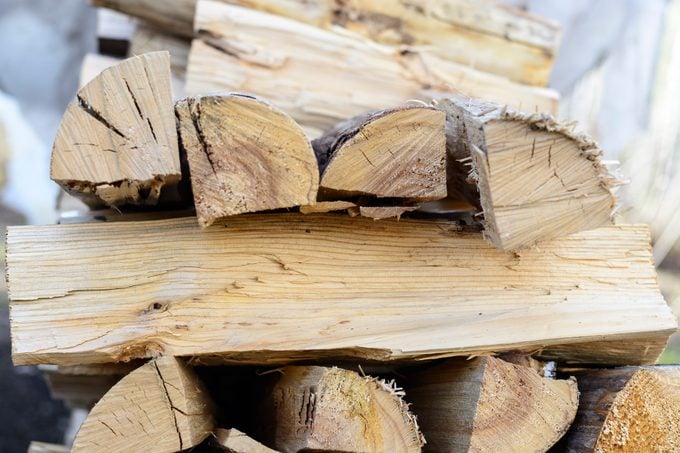What To Know About Kiln-Dried Firewood
The kindling had barely caught fire when the surrounding wood suddenly began to catch and burn as well. I’ve been an avid outdoorsman for decades, and this was by far the easiest campfire I’d ever started. I didn’t even need a fire-starter kit. Maybe there was something to this kiln-dried firewood after all.
My late father liked to burn kiln-dried wood in the fireplace of his Indianapolis home. He only built fires on special occasions, and preferred kiln-dried firewood because it was simple to start and he needed less of it for an impressive fire. After he passed away, I took his remaining bundles of firewood camping with me. It turns out, like with most things, he was right.
What Is Kiln-Dried Firewood?
After a tree is felled and the wood split, it needs to dry out (or season) for up to 18 months to be useful firewood. Kiln-drying speeds up that process.
Placed in a climate-controlled kiln, the wood bakes between 120 to 220 F with low humidity, typically for about three to six days. By then, its moisture content has fallen below 20 percent, perfect for burning. For comparison, freshly cut wood has a moisture level around 60 percent, while naturally seasoned firewood typically holds 30 percent.
So How is Kiln-Dried Firewood Better?
Skeptical? Here are some compelling attributes of kiln-dried firewood:
- It’s easier to start and maintain a roaring campfire than standard wood.
- It burns more efficiently. That means a hotter fire with less smoke and fewer logs burned.
- Kiln-drying destroys residual pesticides and mold while also killing off invasive pests like the emerald ash borer and Asian longhorn beetle. For that reason, many state and national parks that ban firewood from outside the immediate area will make exceptions for pre-packaged kiln-dried wood.
- Because each piece of wood holds less moisture, it weighs less. It also sounds different. Tap on a piece of kiln-dried wood, and it sounds more hollow.
How Expensive Is Kiln-Dried Firewood?

Expect to pay more than seasoned firewood, perhaps as much as 10 to 30 percent more per bundle or cord. For many converts, the advantages of kiln-dried wood more than make up for the additional cost.
How and Where To Buy Kiln-Dried Firewood
You can buy bundles of kiln-dried firewood at home improvement stores such as Lowe’s and The Home Depot. Be sure to look for “kiln-dried” on the label.
Buying a rick or cord may be more difficult depending on where you live. A quick Google search should tell you if any local providers offer kiln-dried wood. The national average for a kiln-dried cord is slightly more than $500.
After the cord is delivered, stack the wood loosely off the ground to prevent moisture. Keep it at least two feet from any walls for better air circulation. And cover the wood pile to protect it from rain and snow.
How To Kiln-Dry Your Own Firewood
Several companies sell complete industrial kiln dryers that cost many thousands of dollars. If you don’t plan on going into business selling premium firewood, it’s not a reasonable option. Luckily most competent DIYers can build a workable version of a kiln.
There are plenty of YouTube videos of folks making their own, including a few who modified non-working refrigerators and freezers into small kilns using incandescent lightbulbs or heat lamps. To create your kiln, we recommend building or repurposing an enclosed and insulated box or shed, preferably with a concrete or wood floor. (No bare earth.)
Set up a series of heat lamps throughout the box. The larger the box, the more lamps you’ll need. If you have some wiring skills, you can wire the lamps into a thermostat, allowing you even greater control of the temperature. Be sure to add some small fans to aid air circulation, as well as a dehumidifier.
How will you know when the drying process is complete? Test the moisture level with a wood moisture meter. When it’s 20 percent or below, you’re ready to use the wood and start drying the next batch.
The whole project should cost less than $500. Depending on how much wood you use in a year, it may be a worthwhile investment.
No comments